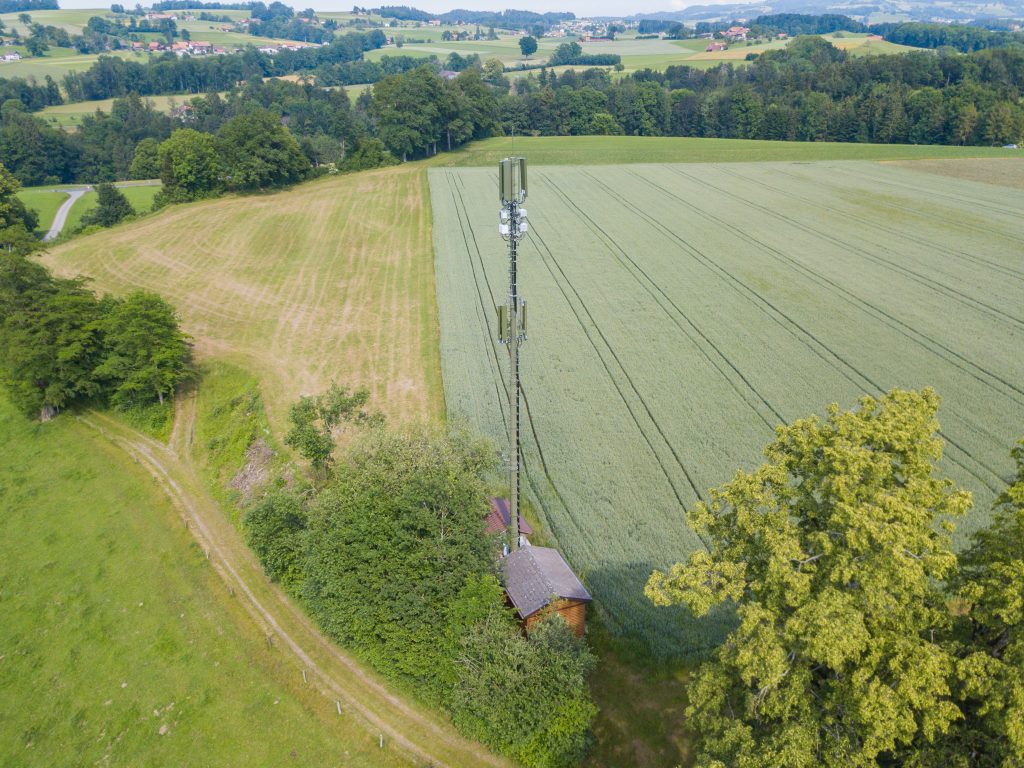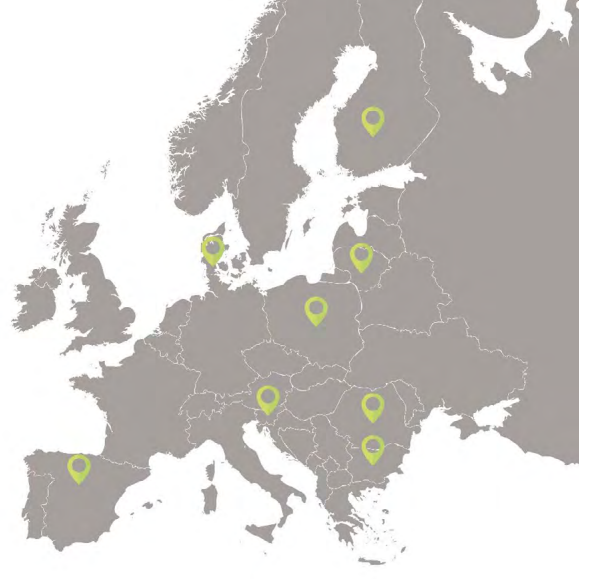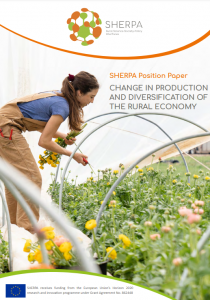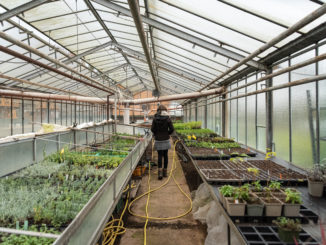
As rural Europe deals with its challenges and embraces its opportunities, what role for production change and diversification? And what are the key factors involved? SHERPA -Sustainable Hub for Engaging into Rural Policies with Actors – a Horizon 2020 project, addresses this topic. Key areas highlighted that can lead the process of diversification include entrepeneurship, digitalisation, bioeconomy and the food chain.
Diversifying Europe’s rural economy
Green and digital transitions will form part of a much-needed transformational change of European rural areas, and the necessary and significant adjustments require changes in the production and diversification of the rural economy. These adjustments offer new opportunities in and for rural areas, contributing to the continued improvement of the resilience of rural communities and the post-COVID19 pandemic recovery of rural areas.
In this sense, for the past year, various Multi-Actor Platforms (MAPs) across European rural areas, worked together with researchers, local actors and policy-makers to identify key challenges and opportunities for the diversification of the rural economy. This activity has been part of the ongoing work of the Horizon 2020 project, SHERPA.

The recently published SHERPA Position Paper contributes to the debate by presenting recommendations for production changes and diversification of the rural economy, building on the challenges and opportunities identified by the Multi-Actor Platforms in their areas. There are several key areas highlighted that can lead the process of diversification.
Download SHERPA Position Paper – Diversification
1. Entrepreneurship, employment and new business models
Rural tourism seems to be an area that is largely unexploited, yet it can offer opportunities for a diversified economic activity. In this respect, promoting the development of business models that rely on sustainable use of resources can support the creation of sharing economy and further develops sustainable tourism practices.
Alongside tourism, the relatively new trend of remote working and its push during the pandemic has increased rural areas’ attractiveness for people relocating or even retaining them. To this end, strategies to support remote work and develop multi-service centres are much needed. This can be done by bringing together public, private and third sector services, to design and roll-out pragmatic strategies that respond to the local needs. Adding digitalisation to the mix of opportunities, these spill onto domains such as education and accessibility, which are largely facilitated by this process. A process that boosts entrepreneurship, creates local employment and supports new business models. In addition, advice and assistance to entrepreneurs in rural areas can be coupled with start-up funding, to incentivise business creation.
2. Smart rurality, smart communities and digitalisation
The concept of “smart” has always been debated and rightly, so, “smart” can mean different things to different contexts. Yet, “smart” in rural development is not always about “digital”. While digital solutions do play an important role in smart ruralities and communities, these are not what define “smart” in its entirety. “Smart” is also about ‘thinking outside the box’, making use of local assets and maximise their potential. It is undeniable that there are many digital options that can help reduce dependence on physical mobility, facilitate rural life and enable working from home. The pandemic has greatly accelerated digitalisation in many rural communities.
Research shared by the Finnish multi-actor platform shows that telecommunication policy in Finland has been successful, and the continued (and improved) availability of broadband infrastructure in rural areas is highly encouraged. Despite this evidence, the development of digital infrastructure remains a major challenge in rural areas, alongside broadband access, digital knowledge, competence and skills. The potential of labour redundancies presents a relevant socio-economic implication that is worth considering. The balancing act here is to find the right path for a sustainable digital transition, increasing benefits and reducing costs for the rural areas and their communities.
3. Bioeconomy and sustainable management of resources
The energy sector has been highlighted as an area that brings plenty of opportunities to rural areas, specifically from biomass sources and the development of smart equipment and renewable energy sources. Equally important is the research and innovation in agricultural sector for the production of healthy food. In this sense, education, training and knowledge sharing play an important role in the transition to bio-based economy in rural areas. Relevant educational and training programmes can accelerate the adoption of bioeconomy solutions at all levels.
Currently, the lack of understanding and awareness of the bio-based economy concept leads to a lower uptake in rural regions. This is linked to the lack of common strategies and policies that can support this transition. The multi-actor platforms concluded that these challenges can be addressed through developing a common long-term strategy for bioeconomy and sustainable management of resources at national levels. Alongside the strategy, more information on the full concept of bioeconomy, including the cost-benefits analysis, can help raise the needed awareness among all actors involved, mobilising society, consumers and investors, as well as civil servants. There is a clear need for appropriate skills in agricultural production. Increasing the financial support to implement bio-based solutions in rural areas can be an incentive or a significant driver for its adoption.
4. Farm diversification and food chains
A positive momentum can be appreciated for high quality and local produce. This is backed up by strong political support to short supply chains and an equally strong institutional framework for certification of (local) food products within national and EU quality schemes (PDO, PGI, TSG, etc.). The Common Agricultural Policy through the Rural Development Programmes offers support for short agri-food supply chains. Some examples are the direct sale of products, farmers’ market, fairs and such.
At a social level, there is an ongoing shift in consumer preferences towards local, traditional, high quality and environmentally friendly food products. The arrival of new comers brings a social capital that can bring innovation and creativity, alongside entrepreneurial spirit to rural areas, driving the diversification of farming activities. However, to take advantage of these opportunities, the legislative gap needs to be addressed and design a policy framework that can enable both large and small farms to apply diversification strategies. This goes hand in hand with a strong role for cooperatives, promoting the production of traditional/local crops, and the need to acknowledge the importance of organic farming in diversification. Fostering consumers’ awareness remains a top recommendation.
Further to the MAPs findings, the recommendations were discussed by the EU-level platform looking at how the European Union could support these. These conclusions reflected on the following aspects:
- The existing enabling framework at the EU level of the current policies and available funding.
- Member States should be encouraged to develop national and regional strategies focused on realising a positive structural rural economic change.
- A common definition for “smart” in the rural development context would not effectively encompass the diversity of rural areas. In this regard, Member States have the opportunity to develop their own tailored and place-based definitions.
- Knowledge is key to transforming production and achieving diversification in rural economy. To this end, additional resources to facilitate skills development for enhanced productivity and diversification of rural economies, keeping up the pace with the new economic and technological trends.
SHERPA – Sustainable Hub for Engaging into Rural Policies with Actors is a Horizon 2020 funded project (2019-2023) coordinated by Ecorys which involves 17 partners. The article is based on the SHERPA Position Paper ‘Change in production and diversification of the rural economy’ published in April 2022.
More
The Influence of EU Policies in National Rural Digitalisation
Rural Ireland on the Move – new report on Just Transition and Diversification launched.





